

Biostimulants in Agriculture
Introduction:
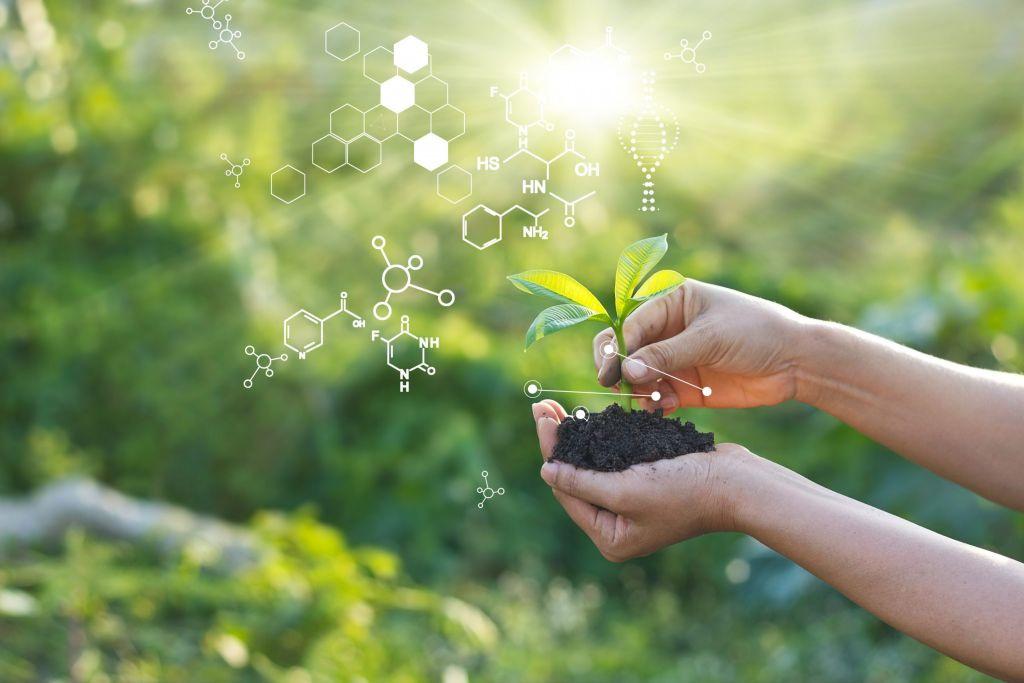
There are an increasing range of inputs, being used in primary production to improve plant growth outcomes, that do not fall into the established categories used to classify common agricultural or horticultural products. These have been broadly termed biostimulants
Bio: relating to life
Stimulant: an agent that produces a temporary increase in the functional activity or efficiency of an organism or any of its parts
Biostimulant Formulations
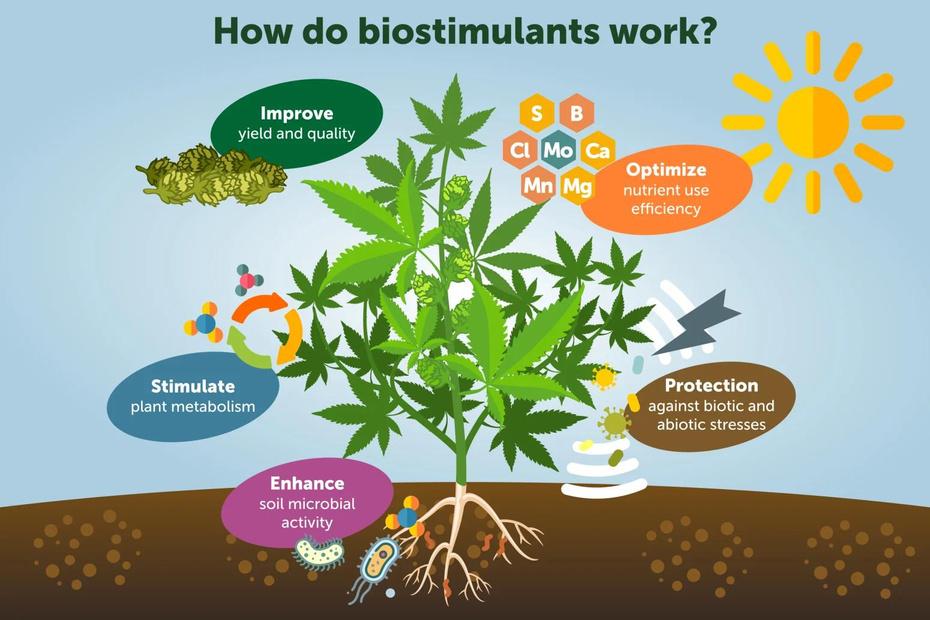
“Put
simply, a biostimulant could be any agent, that increases the activity or efficiency of living things.”
Currently recognised constituents of biostimulants include:
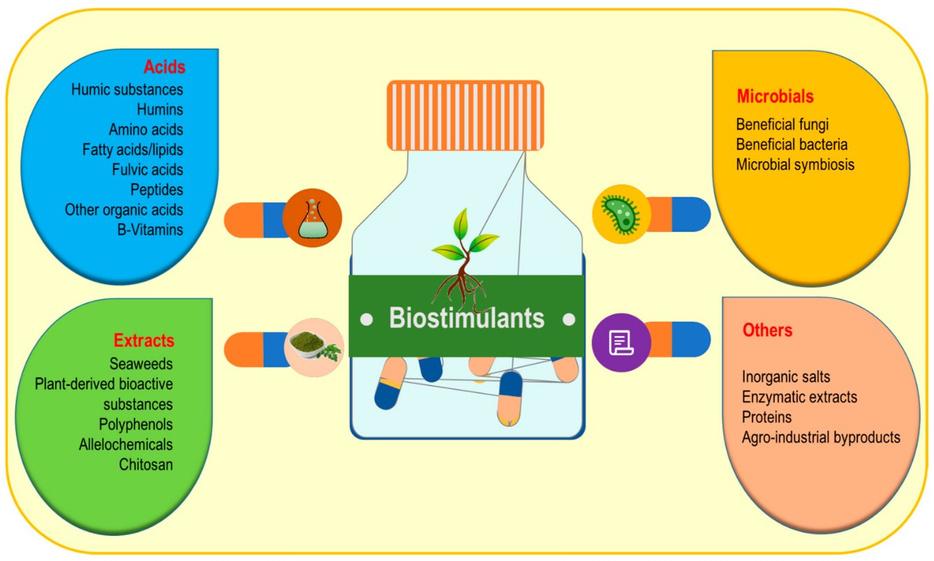
Biostimulant formulations may contain one ie seaweed extract, or a combination of these constituents ie compost/vermiculture
Humic substances
Nitrogenous substances including amino acids
Non-essential chemical elements
Seaweed extracts and other plant botanicals
Chitin and chitosan derivatives
Anti-transpirants
Other complex organic materials
Beneficial bacteria
Beneficial fungi
Other non-pathogenic microbiology
Application of Biostimulants
Biostimulants are designed to stimulate biology As such, when applying biostimulants it is important to consider what biology we are attempting to stimulate and why?
We can apply biostimulants to the soil or the plants, but the end goal is always to improve plant growth. Chosen biostimulants may directly elicit a favourable plant growth response or indirectly by altering growing conditions through physical, biological, and chemical mechanisms
Key considerations:
We may apply a biostimulant that temporarily stimulates plant growth and root exudation This in turn drives extra microbial activity in the soil, which leads to better nutrient acquisition and delivery to the plant roots, furthering subsequent growth, exudation, and so on
Equally, a soil application that stimulates beneficial microbial activity around plant roots, improving nutrient availability, fosters stronger plant growth, an increase in root exudation etc
In either case, we get a greater overall response than what could be attributed to the application alone However, if there wasn’t much plant cover, or the soil was in a poor state, or there was a lack of moisture etc, the potential for a beneficial response from a biostimulant application would be limited and short lived
We need to ensure that the necessities of life ie nutrition, water and air are in in place for biostimulants to have any significant and lasting effect
Fundamentals like actively growing plants, soil cover, organic matter, good soil structure, moisture, nutrient supply etc… are what ultimately determine our success, and while biostimulants can enhance living processes, they are only effective when used in conjunction with good overall management and limiting factors are addressed first
By applying biostimulants at planting or, where we have established perennial plants, at the beginning of the growing season, we can get a compounding of the beneficial flow on effects discussed above For instance, if we inoculate seed with beneficial bacterial/fungal at planting, we set the scene for a healthy plant microbiome from the start
Only small amounts of the biostimulant are needed to get things going, from which point on, the plants and microbes support each other In this way biostimulants can be used as a catalyst for the establishment of a healthy system
Mature plants are generally less responsive to biostimulant applications because, larger quantities are required relative to the larger amount of plant mass, older leaf and root tissue is less receptive, competitive microbe populations are already established on and around the plants, and root exudation drops off

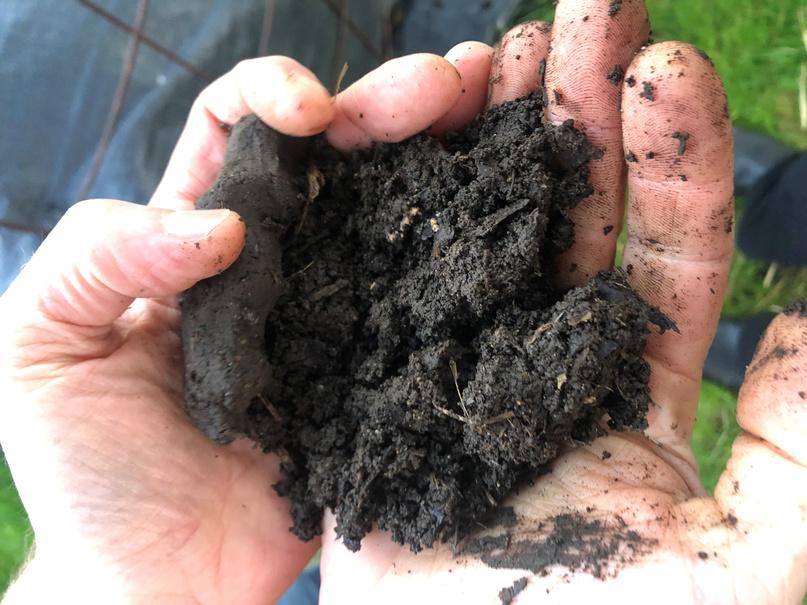



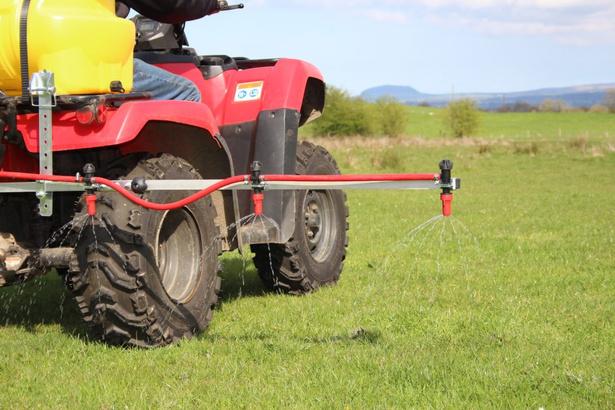
Complimentary Combinations
A final strategy worth considering is combining compatible and complimentary components in biofertiliser applications With such formulations, we can get a compounding synergistic effect and more bang for our buck, and time, than we would from applications of individual components
Useful combinations include:
Applying microbial groups that are known to complement one another (ie bacterial and fungal inoculants) together
Applying microbes (ie compost extract, beneficial bacteria/fungi) with a source of food (ie fish hydrolysate, molasses, humic substances) to support microbial activity
Applying microbes (compost extract, beneficial bacteria/fungi) with growth promoting hormones and antioxidants (ie seaweed extract) to support healthy microbial growth
Applying minerals (ie rock phosphate) with microbes (compost extract, mycorrhizal inoculant) to improve nutrient availability and delivery.
Applying nutrients (ie trace elements) with a substrate that has nutrient holding capacity and/or chelating properties (humic substances) to improve the retention and/or uptake of nutrients
We can use multiple combinations in a formulation, if they meet mixing and application requirements
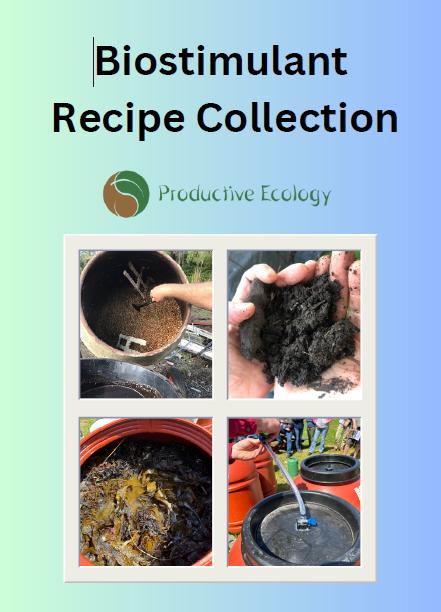
This booklet is a compilation of DIY recipes by Mark Tupman from Productive Ecology

This booklet is a compilation of Bio ferment and fertilser recipes by David Hardwick from Soil Land Food
Recipes are downloadable from the full online article ‘Biostimulants in Agriculture’ To access please go to https://lower-blackwoodshorthandstoriescom/biostimulants-inagriculture/index.html
Useful references
du Jardin P (2015) Plant biostimulants: Definition, concept, main categories and regulation
Scientia Horticulturae 196:3-14 DOI: https://doiorg/101016/jscienta201509021
Li J, Van Gerrewey T, Geelen D (2022) A Meta-Analysis of Biostimulant Yield Effectiveness in Field Trials Front Plant Sci 13:836702 DOI: 103389/fpls2022836702
https://wwwfrontiersinorg/articles/103389/fpls2022836702/full Pichyangkura R., Chadchawan S. (2015) Biostimulant activity of chitosan in horticulture. Scientia Horticulturae 196:49-65 DOI: https://doiorg/101016/jscienta201509031
Ruzzi M., Aroca R. (2015) Plant growth-promoting rhizobacteria act as biostimulants in horticulture Scientia Horticulturae 196:124-134 DOI: https://doiorg/101016/jscienta201508042
https://www.sciencedirect.com/science/article/abs/pii/S0304423815301618
Schabl P (2017) Silica Application as a Promising Approach for Control of Fungal Diseases for Grapevine Vitis vinifera L., Geisenheim University, Geisenheim.
file:///Users/admin/Downloads/fulltext 17049pdf
Shukla PS, Mantin EG, Adil M, Bajpai S, Critchley AT, Prithiviraj B (2019) Ascophyllum nodosumBased Biostimulants: Sustainable Applications in Agriculture for the Stimulation of Plant Growth, Stress Tolerance, and Disease Management Frontiers in Plant Science 10
https://wwwfrontiersinorg/articles/103389/fpls201900655/full Stasińska-Jakubas M, Hawrylak-Nowak B (2022) Protective, Biostimulating, and Eliciting Effects of Chitosan and Its Derivatives on Crop Plants Molecules 27 DOI: 103390/molecules27092801https://pubmedncbinlmnihgov/35566152/ Waguespack, E , Bush, E and Fontenot, K (2022) The Effect of Organic Biostimulants on Beneficial Soil Microorganism Activity Open Journal of Ecology, 12, 499-512 doi: 104236/oje2022128027
This document is a downloadable summary of the online article & content hub ‘Biostimulants in Agriculture’ The article was produced by 'Talkin' After Hours', the Lower Blackwood Landcare's Online Community & Information Hub, and written & collated by Mark Tupman from Productive Ecology The aim of the article is to assist land managers to understand the different biostimulants available, how to make their own, and when & how to use them


The development of this article was funded through Soil Wise Soil Wise is funded by the National Landcare Program Smart Farms Small Grants – an Australian Government initiative. It is supported by Healthy Estuaries WA – a State Government program


